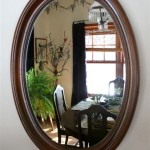How To Screen Mirror Mac With Samsung TV
Screen mirroring allows users to display the contents of their Mac's screen on a larger display, such as a Samsung TV. This feature offers several benefits, from enjoying media content on a bigger screen to delivering presentations without needing a separate projector. This article outlines various methods for achieving this, catering to different technical setups and user preferences.
1. Using AirPlay 2 with Compatible Samsung TVs
The most straightforward method for mirroring a Mac to a Samsung TV is using AirPlay 2. This technology allows for wireless streaming of content directly from Apple devices to compatible smart TVs. Users should first ensure their Samsung TV supports AirPlay 2. This information can usually be found in the TV's settings menu or the manufacturer's website.
To initiate screen mirroring, users should click the Control Center icon in the Mac's menu bar. Then, select "Screen Mirroring" and choose the Samsung TV from the list of available devices. The TV should display a code that needs to be entered on the Mac for initial pairing. After this initial setup, the connection should establish automatically in subsequent mirroring sessions.
Users can mirror the entire Mac display or opt to use the TV as a separate display, extending their desktop. This latter option is useful for multitasking, allowing users to work on one screen while presenting content on the other.
2. Utilizing Apple TV
For Samsung TVs that don't have built-in AirPlay 2 support, using an Apple TV provides another seamless mirroring solution. Connect the Apple TV to the Samsung TV via an HDMI cable and ensure it's connected to the same Wi-Fi network as the Mac. On the Mac, click the Control Center icon in the menu bar, select "Screen Mirroring," and choose the Apple TV from the list.
Similar to AirPlay 2 direct mirroring, users have the option to mirror the entire Mac's screen or extend the display. The Apple TV method offers reliable performance and high-quality streaming due to its dedicated hardware.
3. Third-Party Screen Mirroring Applications
Several third-party applications offer screen mirroring functionality for Macs and Samsung TVs. These applications generally work by creating a software bridge between the devices over the local network. Researching and selecting a reputable application is crucial, as some options may offer limited features or impact performance.
Once a suitable application is installed on both the Mac and a compatible device connected to the Samsung TV (like a smartphone or streaming stick), users can typically initiate mirroring through the application's interface. Configuration may vary depending on the specific application chosen, so consulting the application's documentation is recommended.
4. HDMI Cable Connection (For Non-Smart TVs or Specific Requirements)
While wireless methods offer greater convenience, a direct HDMI connection provides a stable and reliable mirroring solution, particularly for older, non-smart Samsung TVs or situations requiring minimal latency. Users will need an HDMI cable and potentially a USB-C to HDMI adapter depending on their Mac model.
Connect one end of the HDMI cable to the Mac and the other to the HDMI port on the Samsung TV. Select the appropriate HDMI input source on the TV. The Mac screen should then be mirrored on the TV. Audio will also be transmitted through the HDMI cable.
5. Chromecast with Google Chrome Browser
For users primarily using the Google Chrome browser, Chromecast provides a convenient way to mirror a specific browser tab or the entire desktop to a Samsung TV. Ensure a Chromecast device is plugged into the Samsung TV's HDMI port and connected to the same Wi-Fi network as the Mac.
Open the Chrome browser on the Mac and click the three-dot menu icon in the top right corner. Select "Cast..." and choose the Chromecast device from the list. Users can choose to cast a specific tab, the entire desktop, or a specific file. This method is particularly useful for sharing web-based content on a larger screen.
6. Troubleshooting Common Issues
Occasionally, users might encounter issues with screen mirroring. If the connection fails to establish, ensure both the Mac and the Samsung TV (or intermediary device) are connected to the same Wi-Fi network. Restarting both devices can often resolve temporary network glitches.
If the mirrored image appears distorted or lags, check for sources of wireless interference, such as other electronic devices operating on the same frequency. Moving closer to the Wi-Fi router can also improve connection stability and performance.
For software-based mirroring solutions, ensuring both the Mac and the receiving application are up to date is essential for optimal functionality and compatibility. Consulting the application's troubleshooting documentation can provide specific solutions for common problems.

How To Screen Mirror Mac Samsung Tv Step By Guide

How To Mirror A Mac Smart Tv

How To Mirror Mac Screen Samsung Tv Without Apple

How To Screen Mirror Macbook Samsung Tv

Best Ways To Screen Mirror Samsung Tv In 2024

14 Fixes For Screen Mirroring Mac To Samsung Tv Not Working Techwiser

Connect Hisense Tv To Apple Mac Wireless Screen Mirror App

How To Mirror Mac Samsung Tv

Diffe Apps For Screen Mirroring Mac To Samsung Tv

How To Mirror A Mac Smart Tv








